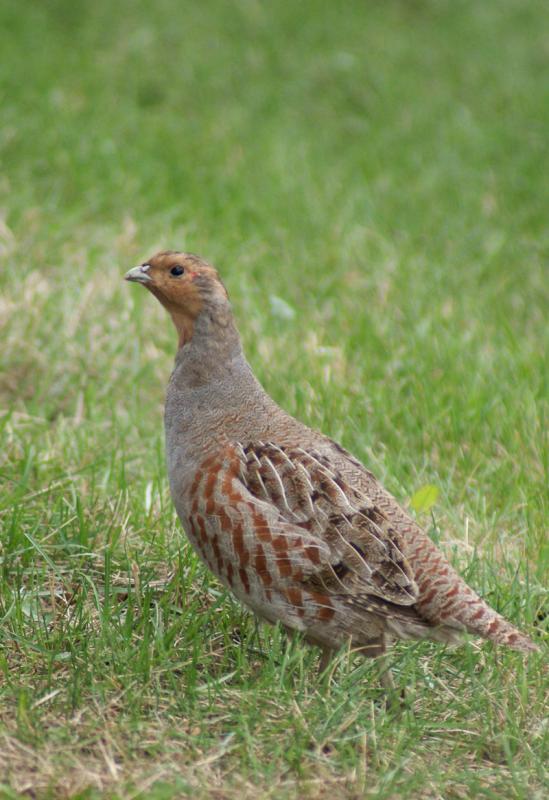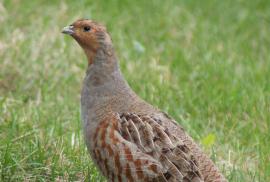Guide to Boreal Birds
Overview
Also called the "Hungarian Partridge," this bird is well adapted to areas of intensive agriculture, a habitat claimed by no native game bird. It forms coveys outside the breeding season, like the Northern Bobwhite, but does not defend a territory. In spring the flocks break up into pairs. While the male takes no part in incubating the eggs, he does help care for the young, which leave the nest soon after hatching. The Gray Partridge's high reproductive rate enables it to withstand hunting, predators, and cold, snowy northern winters, all of which take a heavy toll.
Description
12-14" (30-36 cm). A small, stocky, chicken-like bird, largely gray, with black U-shaped mark on underparts and bright rust-colored tail, most evident when it flies.
Voice
Hoarse kee-ah; when flushed, a rapid cackle.
Nesting
10-20 unmarked olive eggs in a shallow depression lined with grass and concealed in vegetation.
Habitat
Grainfields, agricultural grasslands.
Range/Migration
Introduced and locally established in Nova Scotia, New Brunswick, northern New York, Ontario, Ohio, Indiana, southern Michigan, Iowa, Minnesota, and across northern part of western United States to British Columbia. Introduction in West has been much more successful than in East. Native to Eurasia.



